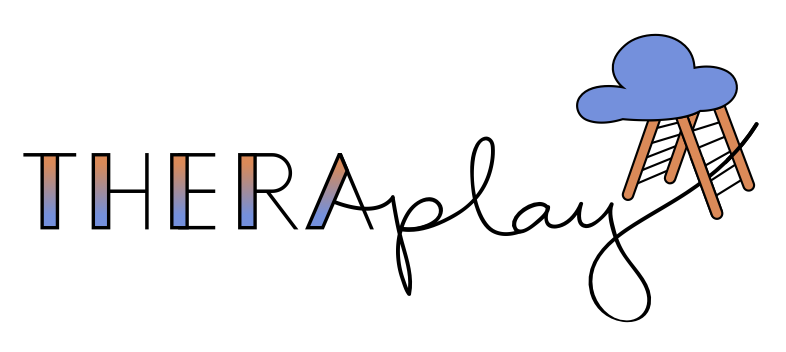Everything You Need to Know About the ATNR (Asymmetrical Tonic Neck Reflex)
If your child struggles with balance, coordination, reading, or handwriting, an unintegrated Asymmetrical Tonic Neck Reflex (ATNR) may be the cause. The ATNR is one of the many primitive reflexes babies are born with, helping them develop movement and coordination. But if it doesn’t integrate properly, it can lead to learning, motor, and sensory challenges later in life.
TL;DR: The Asymmetrical Tonic Neck Reflex (ATNR) helps babies develop coordination and movement, but if it remains unintegrated past 6 months of age, it can lead to struggles with balance, handwriting, reading, and motor skills. Primitive reflex integration therapy uses targeted exercises to improve coordination, hand-eye skills, and learning abilities, helping children feel more confident and in control.
In this post, we’ll cover:
What the ATNR is
How the ATNR helps babies develop
By what age the ATNR should be integrated
Signs of an unintegrated ATNR
How primitive reflex integration therapy can help address symptoms of an unintegrated ATNR
What Is the Asymmetrical Tonic Neck Reflex (ATNR)?
The Asymmetrical Tonic Neck Reflex (ATNR) is a reflex that happens when a baby turns their head to one side. When this happens:
The arm and leg on the same side extend
The opposite arm and leg bend
Because of this, the ATNR is often called the “fencing reflex”, since the baby’s position looks like a fencer holding a sword.
This reflex begins developing in the womb and plays a role in:
Helping babies move through the birth canal
Developing hand-eye coordination
Building balance and muscle tone
Encouraging early reaching and grasping movements
When Should the ATNR Go Away?
The ATNR starts developing at 18 weeks in utero and should be fully present at birth. It normally integrates by six months as the baby gains better control over their movements.
If it doesn’t integrate, a child may have trouble with coordination, reading, writing, and crossing the midline of their body (such as reaching across their body to grab something).
Symptoms of an Unintegrated ATNR in Children
A retained ATNR can lead to challenges with movement, learning, and hand-eye coordination. Signs of an unintegrated ATNR include:
🚩 Trouble crawling as a baby – Difficulty moving arms and legs in a coordinated way, skipped crawling, or “butt scooting,” “inchworm crawling,” etc.
🚩 Delayed engagement with toys – Less reaching or grabbing as an infant
🚩 Poor balance when learning to walk – Struggles with stability and/or frequent falls
🚩 Left/right confusion – Difficulty knowing which side is which
🚩 Reading and writing challenges – Trouble tracking words across a page or reversing letters
🚩 Gravitational insecurity – Fear of movement, climbing, or being off the ground
🚩 Midline crossing difficulties – Struggling with tasks that require using both sides of the body together or using one hand as the “helper hand” to stabilize objects with the other hand acts on them (i.e. holding the paper down when writing, holding a bowl while stirring or eating, etc.)
🚩 No or poor establishment of hand dominance – Difficulty deciding which hand to use for tasks (may present as ambidextrous or use different hands for different tasks)
🚩 Coordination struggles – Trouble catching or throwing a ball
🚩 Dyslexia or dysgraphia – Issues with reading, writing, or letter formation
A retained ATNR can make learning frustrating and exhausting because the body’s movements interfere with focus and coordination.
How Is the ATNR Integrated?
If the ATNR does not integrate on its own, primitive reflex integration therapy can help! A trained occupational therapist may use:
Movement exercises – Activities that encourage smooth, controlled movements
Midline crossing activities – Games and exercises that involve reaching across the body
Vestibular (balance) training – Activities that strengthen coordination and stability
Hand-eye coordination tasks – Exercises to improve writing, tracking, and motor control
Because the ATNR is closely linked to the vestibular system, working on balance and movement skills is key to full integration.
Why Primitive Reflex Integration Matters
When primitive reflexes don’t integrate properly, they can cause lifelong challenges with learning, coordination, and sensory processing. Addressing an unintegrated ATNR can help children:
✔ Improve reading and writing skills
✔ Develop better balance and coordination
✔ Strengthen hand-eye coordination
✔ Reduce frustration with schoolwork
✔ Feel more confident in their body movements
If your child struggles with handwriting, coordination, or learning difficulties, primitive reflex integration therapy could be the missing piece!
Still not sure if Primitive Reflex Integration is right for your child? Use our Free Screening Checklist!
At TheraPlay LA, our expert therapists specialize in primitive reflex integration to help children develop the skills they need to succeed. If you’re curious about whether a retained ATNR is affecting your child, contact us today to learn more!


